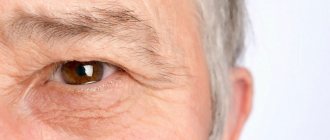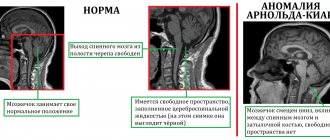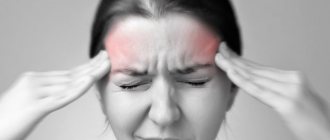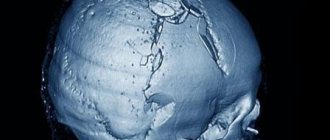Causes of nervous dermatitis
The exact cause of this disease is unknown. It is believed that this is a special condition of the nervous system in which the nerve endings are on high alert and tell the brain that the skin is itching, although in fact there is no irritant causing itching.
Provoking factors
It is unclear what exactly initiates the inflammation process, but it has been noted that certain exposures can cause an exacerbation of neurodermatitis. Here is a list of triggers that, according to reviews, most often provoke the disease.
- Stress and negative emotions;
- Nerve damage;
- Insect bites;
- Harsh soaps and detergents;
- Some types of fabrics that are tough, scratchy or scratchy, such as wool;
- Perfumes, skin care products, cosmetics;
- Pollen and mold;
- Wool, dander, dried saliva of pets;
- Tobacco smoke;
- Dry and frosty winter air, low air humidity;
- Hot shower or bath, too long washing;
- Dry skin;
- Sweating;
- Dust or sand;
- Certain foods (most commonly eggs, dairy, wheat, soy, and nuts).
Risk factors
- Female. Women are more prone to nervous dermatitis than men.
- Young age. Neurodermatitis usually affects people under fifty years of age.
- Other skin diseases. Patients suffering from atopic dermatitis, eczema or psoriasis are more likely to develop nervous dermatitis.
- Anxiety disorder, obsessive-compulsive disorder, as well as other conditions accompanied by nervous tension are a powerful provoking factor for itching in neurodermatitis.
Symptoms of nervous dermatitis
- Itching. With neurodermatitis, an itchy area appears on the skin. Unlike psoriasis or eczema, this disease has only one or two affected areas. Very rarely, neurodermatitis spreads and multiple lesions develop. The patient often scratches or rubs the affected area. No objective reason for the itching is identified. Itching intensifies during rest and at night, and stress provokes exacerbations.
- Pain. Some patients report pain. When the disease affects the scalp, it is accompanied by pain or a combination of pain and itching.
- An area of skin with raised edges is rough and dense to the touch, red or purple in color, which appears if the patient continues to scratch.
- With repeated scratching and chronic progression, the area of the pathological process thickens, the surface looks leathery, brownish, and with pronounced thickening it has a grayish tint.
- Hair loss is possible, especially noticeable if the affected area is on the scalp.
- When scratching, the epithelium is damaged, and open wounds and ulcers are formed that bleed. This may lead to infection.
- With a long course and frequent damage, scars form.
- If the integrity of the epidermis is compromised, a bacterial infection occurs. Swelling and pain occur, redness intensifies, and discharge appears, which dries out in the form of yellow crusts.
Examples of psychosomatic allergies
The localization of allergic symptoms and the intensity of their manifestations in psychosomatics are as different as in the case of the classical picture of pathology. Some are quite eloquent:
- The skin suffers: hives, red itchy spots, pustules, painful inflamed nodules appear. This is a common sign of unsuccessful attempts to control the situation, excessive or unjustified expectations, and frustration. To get rid of allergies, you need to look at things sensibly, switch attention from the painful topic, and dot the i’s.
- Face. Rashes on the cheeks, forehead or nose are typical for overly shy people who are afraid to attract the attention of strangers.
- Hands. A typical example of psychosomatics. The patient suffers from neurodermatitis or eczema due to the habit of falling into apathy and dramatizing circumstances. A positive attitude helps you cope.
- Eyes. Conjunctivitis and allergic blepharitis are tormented due to the collapse of plans, illusory hopes, and unwillingness to accept the existing reality.
- Respiratory system. Bronchospasms and tracheitis occur due to excessive anxiety, anticipation of negativity, long stay in a state of tension and stress. This type of allergy is persistent and protracted and is difficult to cure.
In some cases, psychosomatic allergies are disguised as classic ones: to certain foods, cosmetics, wool or fluff. It is sometimes possible to find out this after the fact: when psychogenic factors are eliminated, the problem disappears without additional treatment. With the help of reactions to such allergens, the body protects itself from hidden mental attitudes:
- food aversion may be a consequence of fear of gaining weight;
- an allergy to cat hair signals long-standing trauma due to the death of a pet;
- Increased sensitivity to computer radiation indicates an internal reluctance to go to work in an unloved office.
In such situations, before swallowing antihistamines and kicking the cat out of the house, it is recommended to visit a psychotherapist. Especially if allergies to certain substances or environmental factors have not previously occurred.
Nervous dermatitis in children
Nervous dermatitis in most cases starts in childhood, its symptoms are similar to the disease in adults, and it differs in its characteristic location on the face, neck and elbow bends (see photo). Prolonged contact with allergens and the lack of treatment for atopic dermatitis lead to the baby constantly scratching areas of the skin. This pushes the allergic reaction into the background, making itching the main symptom. The difficulty is that it is impossible to explain to young children that they should not scratch the affected areas. If atopy goes away on its own with age in many people, then a disease that has reached the stage of neurodermatitis is much more difficult to interrupt, especially considering that many glucocorticoid drugs are prohibited for use in children. It is important to consult a doctor in time for treatment.
Types of nerve rash
Nervous allergy is a hypersensitive reaction in the absence of the allergen itself. The inflammatory reaction develops due to irritation of nerve endings - sensitive receptors. At the same time, the same substances as in allergies are released into the surrounding tissues and cause similar changes: itching, swelling, rash and redness. This process is involved in the formation of symptoms of skin diseases (eczema and psoriasis), as well as asthma, migraines, and vasomotor rhinitis.
Urticaria is a disease in which there is redness of the skin, itching and a characteristic rash in the form of irregularly shaped tubercles that can merge with each other. Such changes are provoked by contact with an allergen, exposure to cold, sun, pressure on the skin, as well as emotional stress. Nervous urticaria is quite rare and usually goes away once the stressor is removed. Treatment uses sedatives, as well as drugs that affect the functioning of the autonomic nervous system.
Nervous scabies, or neurogenic itch, is a condition that forms in the brain, while the skin is not affected by the disease. Itching can originate from the brain, or from peripheral nerves and receptors. Central neurogenic includes, for example, a feeling of itching in the amputated limb. The nerves may be pinched by a tight muscle or misaligned bone, causing itching. With shingles, there may also be itching in the area of the affected nerve. In the treatment of nervous scabies, glucocorticoids and antihistamines are ineffective. In case of nerve damage, local anesthetics and capsaicin (a red pepper alkaloid that affects pain receptors) help. If the cause is in the brain, medications are prescribed that act on the pain processing centers in the central nervous system. These are pregabalin and gabapentin.
Signs of nerve allergies
Signs of a nervous allergy
The signs of a nervous allergy are the following:
- Urticaria is a small red rash accompanied by severe itching, which intensifies at night. Appears in any part of the body and eventually merges into larger spots. When scratching, small wounds form on the skin and fester.
- Eczema is the result of a long-term allergy.
- Allergic rhinitis is the discharge of clear mucus from the nasal cavity, causing swelling of the nasal mucosa. There are disturbances in the functioning of nasal breathing, which lead to discomfort and oxygen starvation of the brain.
- A paroxysmal dry cough is a characteristic manifestation of a reaction to stress. The cough can be so strong that it causes a person to have asthma attacks. In the absence of timely and correct treatment, bronchial asthma of an allergic nature develops.
- Disorders in the gastrointestinal tract are accompanied by pain in the abdomen and stomach. There is bloating and loose stools.
- Trembling in the body , limbs, tachycardia, increased level of sweating are signs of a response of the nervous system to a present stimulus.
- Changes in the emotional background - irritability, fatigue, drowsiness, apathy, poor concentration.
Treatment of nervous dermatitis
Nervous dermatitis does not go away on its own; without medical help, external skin changes (see photo) and symptoms intensify, so it is very important to start treating this condition in adults and especially children on time. In addition to drug therapy, it is important to follow good skin care rules and adhere to a certain lifestyle; without this, medications will not be of sufficient benefit.
- You need to stop scratching and rubbing your skin. The itching can be intense, but to control symptoms and prevent flare-ups, it is important to refrain from scratching.
- A cool, damp compress will soothe the skin and reduce itching. In addition, using such a compress before applying a medicinal cream helps the medicine penetrate deeper into the dermis.
- To protect the affected areas from scratching, you can cover them with a bandage. This is especially useful if the patient tends to itch at night, during sleep, and therefore cannot control it.
- Nail care is also very important. In order to cause as little damage as possible when unknowingly scratching or at night, nails should be trimmed short and polished with a nail file.
- Take a warm bath to hydrate your skin. The water should be close to body temperature, in no case hot, and the procedure should last no longer than ten minutes. You can add oat decoction to the bath. It is better not to use soap and shower gel, especially those with dyes and fragrances. Afterwards, gently pat your skin with a towel and immediately apply a hypoallergenic moisturizer.
- Avoid triggers. Pay attention to what usually triggers a flare-up and try to avoid it. For example, use special techniques to cope with stress, do not wear irritating clothes.
Treatment with medications
Only a doctor can diagnose nervous dermatitis and select drug treatment. Therapy has several directions.
| Fight itching |
|
| Softening thickened skin | Salicylic ointment has a keratolytic effect and reduces the thickness of the affected area. |
| Treatment of infection | Antibiotics topically in the form of ointments, or orally in the form of tablets, help fight infection |
| Wound healing | Scratching leads to the appearance of wounds, which are treated in the following ways:
|
| Stress therapy | Stress and anxiety are the main triggers of neurodermatitis, so for treatment to be effective, nervous tension must be eliminated.
|
Treatment of allergies due to nerves
How to treat allergies due to nerves?
The treatment process is significantly different from the treatment of ordinary allergies. To effectively cure nervous allergies, the following measures are taken:
- More communication is prescribed;
- If the cause of a nervous allergy is work, it is recommended to change jobs or take a vacation to restore the nervous system;
- An active lifestyle is prescribed, spending more time outdoors;
- Be sure to set aside a certain amount of time for rest;
- Acupuncture is prescribed, as well as a special relaxing massage.
- In the case of a severe stage of nervous allergies, sedative medications are prescribed.
The therapeutic course of measures is designed to eliminate the main causes of allergies from nerves, so it is necessary to complete all the prescribed measures, as well as visit a psychologist.
It is worth remembering that nerve allergies can lead to serious consequences, such as serious psychological disorders and even death.









